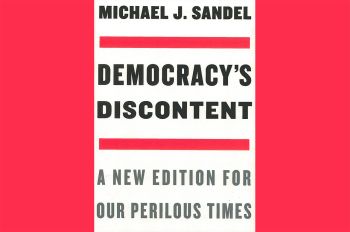Chicago-Kent Professor Measures Quantifiable Growth of Modern Law

As the world grows more complex and diverse, how does the law change?
The short answer: It gets bigger. Quantifiably bigger.
Daniel Katz, director of The Law Lab at Illinois Institute of Technology’s Chicago-Kent College of Law, is part of a large international research project that studies the growth—in actual words, and how those words connect to and reference each other—of law. His recent publications study the growth of federal law in the United States and Germany over the past two and a half decades.
His team found that it grew significantly. Simply put, from 1994 to 2018, the total word count of federal statutes in the U.S. grew from 14 million words to 21.2 million words, a 51 percent increase. Germany saw even larger relative growth over the same time period, with its federal statutes growing from 4.5 million to 7.4 million words, or 64 percent.
“People have the notion that the complexity of the law is growing. But there’s been surprisingly little effort to quantify that: By how much and in what ways and where in the law is this happening?” Katz says. “These are some of the basic scientific questions you might ask about a field. And it hasn’t been done for law. We’re here to change that—to treat law like a science, to take the scientific methods of Illinois Tech and apply them to the law itself.”
Katz’s original article, “Complex Societies and the Growth of the Law,” which was published in Scientific Reports in October 2020 with co-authors Corinna Coupette, Janis Beckedorf, and Dirk Hartung, provides some methodological groundwork for his latest paper, “Measuring Law Over Time: A Network Analytical Framework with an Application to Statutes and Regulations in the United States and Germany,” which was published in Frontiers in Physics in May 2021. The latest article was co-authored by the same research team, with one additional author, Michael Bommarito.
Typically, Katz notes, when he asks people how much they believe that the law has quantifiably grown, “they’re sometimes off by orders of magnitude.”
Here’s another example from the research: The growth in federal regulations based on statutes grew even higher in the U.S. than the federal code, from 43.9 million words in 1998 to 84.3 million words in 2019, a 92 percent increase.
Not only that, but the added language dramatically entangled the overall whole, with additions and addendums creating more and more references and cross-references, requiring those trying to understand the changes to look up other statutes. The research concluded that instances where regulations referenced other regulations, for example, increased by 159 percent in the U.S. between 1998 and 2019.
Also, the changes often require a wider array of federal agencies or departments to take a role in enforcement or oversight.
And the effect of that growth, Katz says, will be that for the average person to comply with this ever-growing mass of laws and regulations, they’ll need a lot more lawyers to help them understand it. In terms of accessibility, starting and running a business, and even adhering to criminal statutes, that’s not such a good thing.
“It creates the demand for lawyers and compliance officers and such, and the economics of just putting more people on problems kind of breaks down at some point,” Katz says. “If modern societies are going to continue to make rules at this rate, you have to come up with some other way to manage all this…to not make it so expensive.”
“It sounds like this project was a massive undertaking, and a great example of collaboration within our field of legal tech,” said Nicole Shanahan, master of ceremonies at Stanford Law School’s April 21, 2021, Law, Education and Experience Talk.
“The very fact that we have such a thing in a physics journal shows that this research is inherently interdisciplinary, and that there is increasing interest in the hard science side,” Hartung—who is executive director of legal technology at Bucerius Law School in Hamburg, Germany—said at the Stanford event.
Katz says the research team stuck to studying federal legislation, as trying to tackle statute growth in 50 separate states would be a gargantuan project.
In their research, the team also measured the law algorithmically, to map which areas of the federal codes were getting more complex. In the U.S., statutes and regulations relating to housing, energy, agriculture and food, and finance consistently had the highest word counts.
“In companies, huge compliance divisions and very large legal teams are trying to manage all this. They have to change (company) policies, make sure people in the company are aware they changed, make sure they’re doing it, and on and on it goes. That’s what it leads to in real life,” Katz says.
“The research does call for a different way of doing law. How are we going to organize the legal and law and compliance industry to manage all this?” Katz adds. “There should be some thought to ways to construct laws and regulations over time, including sunset clauses. We just can’t keep doing things the same way.”



